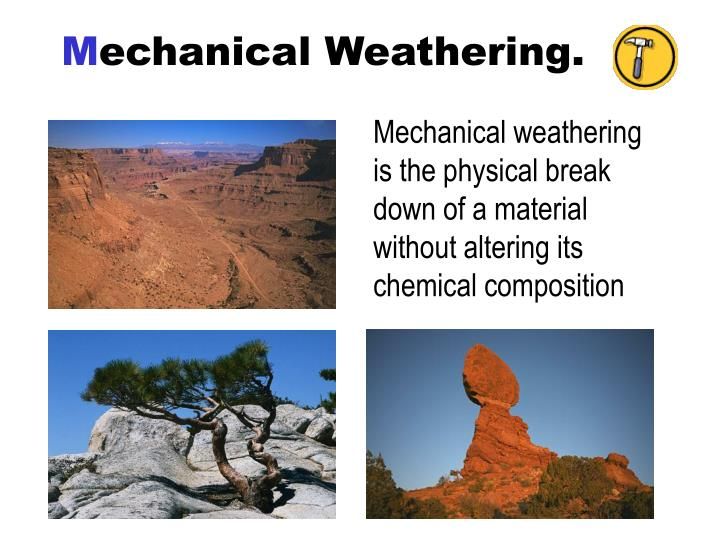Exploring the Factors Contributing to Both Chemical and Mechanical Weathering
Weathering is a natural process that leads to the breakdown and alteration of rocks and minerals over time. It can be categorized into two main types: chemical weathering and mechanical weathering. Both these processes play crucial roles in shaping the Earth's surface. In this article, we will delve into the factors that contribute to both chemical and mechanical weathering, shedding light on their significance and interplay.
I. Chemical Weathering Factors:

Chemical Weathering
Chemical weathering involves the chemical alteration of rocks and minerals. Several factors influence the rate and intensity of chemical weathering:
1. Climate and Precipitation:
The climate of a region, particularly temperature and moisture levels, significantly affects chemical weathering. High temperatures and abundant rainfall accelerate chemical reactions, promoting the breakdown of minerals.
2. Water:
Water is an essential agent in chemical weathering. It acts as a solvent, dissolving minerals and facilitating chemical reactions. Water's role is particularly evident in the weathering of soluble rocks, such as limestone, where it plays a key role in the formation of caves and sinkholes.
3. Acidity and pH:
The acidity of water and soil influences chemical weathering. Acidic substances, like acid rain or organic acids from decaying vegetation, can react with minerals, causing them to dissolve or undergo chemical changes. pH levels also impact the rate of weathering, with acidic conditions generally accelerating the process.
4. Vegetation and Organic Acids:
Plants and organisms contribute to chemical weathering through the release of organic acids. These acids, derived from decaying plant matter, can react with minerals, promoting their dissolution. Additionally, the roots of plants can exert physical pressure on rocks, facilitating their breakdown.
II. Mechanical Weathering Factors:

Mechanical Weathering
Mechanical weathering involves the physical breakdown of rocks into smaller fragments without altering their chemical composition. Various factors influence mechanical weathering processes:
1. Temperature Fluctuations:
Repeated cycles of freezing and thawing, particularly in regions with significant temperature variations, contribute to mechanical weathering. The expansion of water as it freezes within rock fractures can cause the rocks to crack and break apart over time.
2. Pressure and Stress:
The application of pressure and stress on rocks can lead to their disintegration. Geological processes like tectonic activity, where rocks are subjected to immense pressure, can cause fractures and faults. Over time, these fractures widen due to the release of pressure, resulting in mechanical weathering.
3. Wind and Water Erosion:
The physical action of wind and water on rocks can cause abrasion and erosion, leading to their breakdown. Windblown sand and waterborne particles act as agents of mechanical weathering, wearing down exposed rock surfaces over time.
4. Biological Activity:
Living organisms, such as plant roots and burrowing animals, can contribute to mechanical weathering. Plant roots can exert pressure on rocks, causing them to crack, while burrowing animals create tunnels that weaken the integrity of rocks, making them more susceptible to disintegration.
Understanding the factors that contribute to both chemical and mechanical weathering is crucial in comprehending the intricate processes that shape the Earth's surface. Climate, water, acidity, vegetation, temperature fluctuations, pressure, wind, water erosion, and biological activity all play significant roles in the weathering of rocks and minerals. By studying and appreciating these factors, scientists and geologists can gain valuable insights into the dynamic nature of our planet's landscapes.